Mathematical models
Type of resources
Topics
Keywords
Contact for the resource
Provided by
Years
Formats
Update frequencies
-
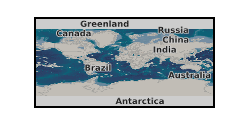
The dataset consists of a series of input and output files for the 1D and 3D numerical models used to demonstrate the impact of heat mining for a 100-m long vertical Borehole Heat Exchanger (BHE) in Scotland, assuming a constant or fluctuating surface heat flux. Simulations for a constant heat extraction from the BHE were performed using an updated version of the open-source OpenGeoSys finite-element modelling software (https://www.opengeosys.org/) made available in this repository. This updated version allows for calculation of the energy change in each material group in the models, as part of the HEAT_TRANSPORT process. For each model, the input files include the mesh file (MSH), the Boundary conditions (BC), geometry (GLI), Initial conditions (IC), Fluid properties (MFP), Medium properties (MMP), Material solid properties (MSP), Numerical parameters (NUM), Ouput parameters (OUT), Process (PCS), Reference (RFD), Source-term (ST) and Time (TIM) files. The output files consists of temperature time-series, 1D and 2D temperature profiles extracted from the models domain at different time steps (i.e. Tecplot output files) and of a text file indicating the energy content of each material group at each time step.
-
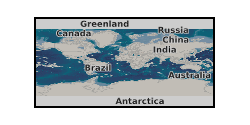
The permeability of single fractures, pairs of conjugate fracture pairs, and 256 fracture networks, is numerically computed using a multi-scale permeability method. For fracture networks, the geometries of the files are contained in 3dm files. The results are presented in a series of json text files. The method to compute permeabilities is described in the PhD thesis entitled "Multi-scale modelling of thermohydro-mechanical-chemical processes in fractured rocks" by Philipp Lang, Imperial College London, supervised by Adriana Paluszny and Robert W. Zimmerman.
-
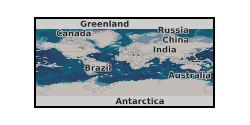
The data contain the results of model of a conductively cooling planetesimal with a radius of 250 km and a core radius of 125 km. Two data files are included: one for a model run which uses constant values for thermal properties (conductivity, heat capacity, and density) while the second uses temperature-dependent functions for these properties. Further details of the model in Murphy Quinlan et al., (in prep). Four arrays are included in each of the compressed data files: mantle temperature array; core temperature array; mantle cooling-rate array; core cooling-rate array. All arrays are the same size (125 by 126229) and hold data for radii values through time, with a radius-step of 1 km and time-step of 1E11 seconds over a total time period of 400 Myr.
-
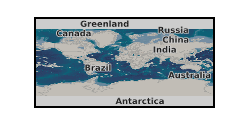
This UKCCSRC (UK Carbon Capture and Storage Research Centre) Call 1 project involved the development, testing and validation of a two-fluid transient flow model for simulating outflow following the failure of high pressure CO2 pipelines is presented. The project made use of experimental data and used experimental data available from other UK/EC funded projects. The model developed accounts for thermal and mechanical non-equilibrium effects during depressurisation by utilising simple constitutive relations describing inter-phase mass, heat and momentum transfer in terms of relaxation to equilibrium. Pipe wall/fluid heat exchange on the other hand is modelled by coupling the fluid model with a finite difference transient heat conduction model. This paper describes the model, the details of its numerical solution and its validation as well as parametric analysis of relevant parameters. http://www.sciencedirect.com/science/article/pii/S1750583614002394, DOI: 10.1016/j.ijggc.2014.08.013. UKCCSRC grant UKCCSRC-C1-07.
-

Numerical model predictions of present-day horizontal deformation due to ongoing glacial isostatic adjustment processes at GPS sites across Antarctica. Model accounts for 3D spatial variations in Earth rheology using a finite element approach.
-
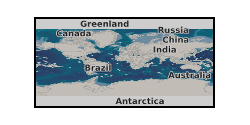
Initiation files for 2D numerical models for Fluidity code. The models simulate subduction of an oceanic plate under various conditions described in Suchoy et al., 2020. The models use temperature, pressure and strain-rate dependent composite rheology, which generates different regions without prescribing material fields. The models are similar in nature to other geodynamic models (e.g. Billen and Arredondo, 2018) and can be used for further investigation of subduction dynamics, and to reproduce the results presented in Suchoy et al., 2020. For further enquiries regarding these models please contact Lior Suchoy (Imperial College London), Saskia Goes (Imperial College London) or Rhodri Davies (Australia National University).
-
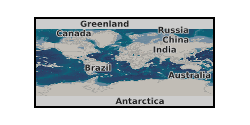
Coordinated by Haroun Mahgerefteh at UCL, the EC funded FP7 CO2QUEST project addressed the main challenges associated with determining the optimal composition and purity of CO2 product streams derived from carbon capture systems for enabling its safe and economic transport and storage. The project brought together academics and major stakeholders to perform computational studies backed-up by large-scale experiments aimed at identifying CO2 mixtures that have the most profound impact on the different parts of the CCS chain. The project ran from March 2013 until June 2016, involving 9 partners across Europe, including from Canada and China. It resulted in over 100 peer reviewed journal publications and conference proceedings, three international conferences and several newsletters, receiving the IChemE Highly Commended Global Process Safety Award in 2016. More information about CO2QUEST including its objectives, deliverables and list of publications may be found at: http://www.co2quest.eu/
-
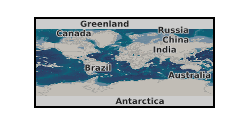
This work presents a detailed three-dimensional finite element based model for wave propagation, combined with a postprocessing procedure to determine the fracture intensity caused by blasting. The data generated during this project includes output files of all simulations with detailed fields, geometries and meshes. The model incorporates the Johnson-Holmquist-2 constitutive model, which is designed for brittle materials undergoing high strain rates and high pressures and fracturing, and a tensile failure model. Material heterogeneity is introduced into the model through variation of the material properties at the element level, ensuring jumps in strain. The algorithm for the combined Johnson-Holmquist-2 and tensile failure model is presented and is demonstrated to be energy-conserving, with an open-source MATLABTM implementation of the model. A range of sub-scale numerical experiments are performed to validate the modelling and postprocessing procedures, and a range of materials, explosive waves and geometries are considered to demonstrate the model's predictive capability quantitatively and qualitatively for fracture intensity. Fracture intensities on 2D planes and 3D volumes are presented. The mesh dependence of the method is explored, demonstrating that mesh density changes maintain similar results and improve with increasing mesh quality. Damage patterns in simulations are self-organising, forming thin, planar, fracture-like structures that closely match the observed fractures in the experiments. The presented model is an advancement in realism for continuum modelling of blasts as it enables fully three-dimensional wave interaction, handles damage due to both compression and tension, and relies only on measurable material properties. The uploaded data are the specific simulation outputs for four explosion models occurring on two different rock types, and the specific fracture patterns generated.
 NERC Data Catalogue Service
NERC Data Catalogue Service